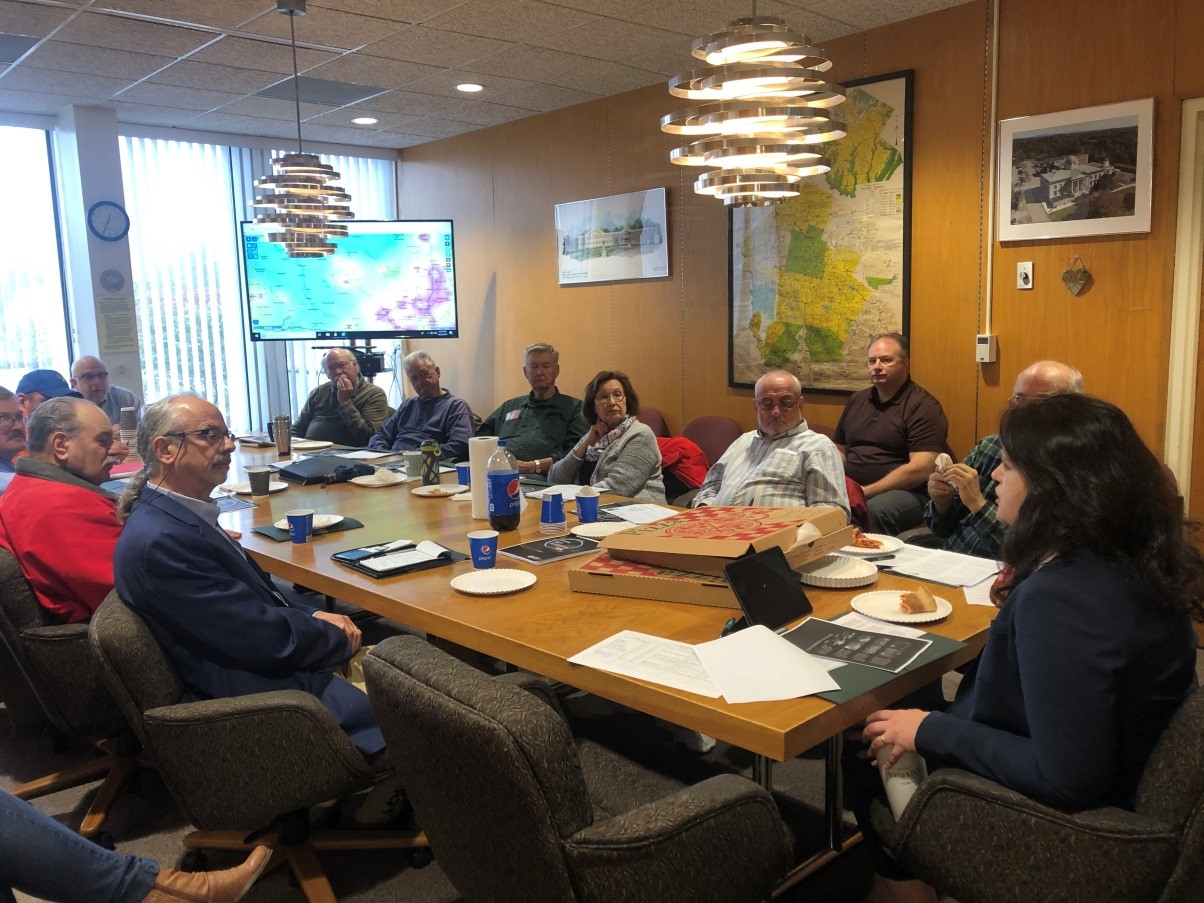
Planning and zoning board officials, as well as professional planners and municipal officials from across Sullivan County, gathered on October 22 to discuss implementing dark skies concepts into municipal practice.
Monticello, NY – Municipal officials from all corners of Sullivan County gathered on October 22 at the Government Center to discuss the impacts of light pollution and share ways to promote “dark skies” principles in local municipal planning.
Light pollution is defined by the International Dark Sky Association as “the inappropriate or excessive use of artificial light…[which] can have serious environmental consequences for humans, wildlife, and our climate.” Light pollution comes from a variety of sources, and roundtable participants shared concerns and examples from their own communities. Many spoke about lighting in large residential developments, hazardous glare to drivers, and light spillover from the County’s urban areas.
Thought of traditionally as an urban issue, rural light pollution has grown with new development and the increased use of low-cost, powerful LED lighting. Though highly efficient, most white LED lighting has significant levels of potentially hazardous blue light. Participants in the dark skies roundtable reviewed material from the International Dark Sky Association that reported blue-rich white light sources increase glare and compromise human vision, especially in the aging eye. In natural settings, blue light at night has been shown to adversely affect wildlife migration and reproduction.
Outdoor lighting with strong blue content has a significantly larger geographic reach than lighting with a lower rating on the Kelvin Temperature scale – i.e. less than 4,000K. The World Atlas of Artificial Night Sky Brightness estimates that outdoor lighting retrofits using 4,000K lamps could increase light pollution by a factor of 2.5. Because of this, they are likely to worsen skyglow, making it more difficult to see stars and other features of the night sky.
John Kocijanski, President of the Catskills Astronomy Club, attended the roundtable and spoke of the small but growing trend of astrotourism, in which people travel to observe meteor showers, photograph stars, and view other sky-related activities. Kocijanski has been contacted many times over the years by hopeful stargazers making the trek to the Sullivan Catskills.
“Limiting light pollution to maintain our view of dark night skies should to be included in the quest to preserve our natural environment for the current and future generations,” he stated. “A sense of awe and wonder that we get by peering into the heavens ought to be available to everyone.”
Kocijanski currently directs people to the Catskill Mountains, Delaware River corridor, and Shawangunk Ridge, which all provide excellent viewsheds for astrotourists.
Several methods to mitigate light pollution were discussed amongst the group, which included local planning and zoning board members as well as consultant engineers providing municipal planning services. Strategies included site plan reviews to ensure projects utilized downward-facing lighting fixtures that prevent spillover onto neighboring properties and varieties of local dark skies ordinances. Because of the technical nature of lighting and lighting plans, the group agreed that more education on the subject was needed.
The Division of Planning provides technical assistance on a regular basis to municipalities on planning issues, such as light pollution. If you would like to organize a board-specific training in your community, contact Shannon Cilento at the Sullivan County Division of Planning & Community Development by calling (845) 807-0529 or emailing Shannon.Cilento@sullivanny.us.
